What does it take to maintain your roof and avoid unexpected repair costs? Preventative roof maintenance is essential, yet many homeowners overlook it until it’s too late. This article outlines vital maintenance tasks that can avert severe damage, prolong your roof’s life, and ultimately save you money—without having to become an expert roofer yourself.
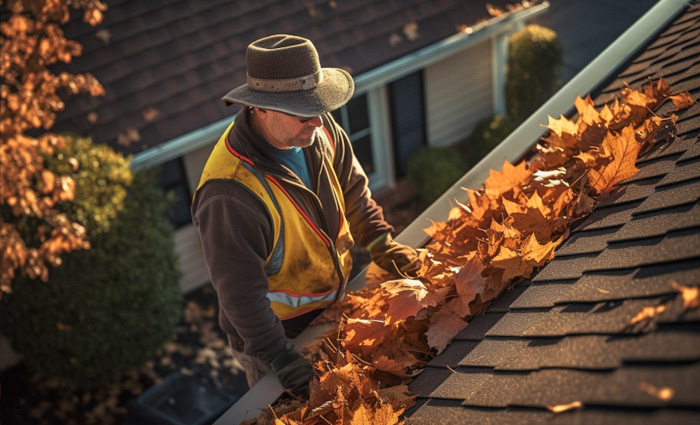
Key Takeaways
- Regular preventive maintenance can extend the lifespan of your roof (10-30 years, depending on the material) and prevent costly repairs, ensuring the long-term safety of your home.
- Essential roof maintenance tasks include cleaning gutters and downspouts, inspecting and repairing flashing, and removing debris to avoid damage to the roof and underlying structures.
- Hiring a licensed, insured, experienced roofing professional for specialized tasks and comprehensive inspections is imperative to ensure quality workmanship and protect your home’s integrity.
The Importance of Preventative Roof Maintenance
Your home’s roof acts as a helmet, safeguarding against the elements and guaranteeing the safety of your loved ones. Regular preventive maintenance keeps this protective layer robust and reliable. Protecting vital areas like roof decking, drip edge, and underlayment helps sustain the integrity of your roof.
Regular maintenance and care are crucial for safeguarding your roof system. Here are some important steps to follow:
- Regularly clean your roof to remove debris and prevent buildup.
- Keep a record of any repairs or maintenance performed on your roof.
- Seek professional maintenance at least yearly to identify and address potential issues.
- Address minor issues promptly to prevent them from becoming major problems. By following these steps, you can save money in the long run and ensure the longevity of your roof.
Roof System Protection
The critical components of a roof system are essential for ensuring durability and protection. They include:
- Roof decking
- Drip edge
- Roof underlayment
- Ice and water shield
- Shingles
- Flashing
- Parts of the roof’s edge
- Trusses
- Drainage
These components work together to keep your building safe and dry.
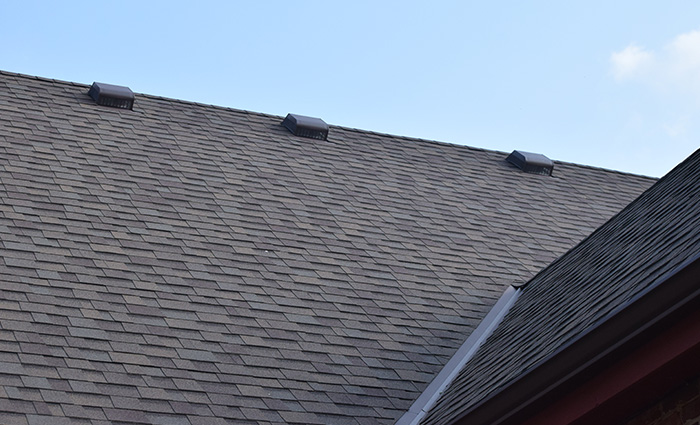
Keeping up with a preventive maintenance program allows for early detection and resolution of issues, extending your roof’s lifespan. It’s a great way to ensure your roof lasts as long as possible.
Financial Benefits
Routine roof maintenance is a wise investment that could lead to substantial savings. Minor roof repairs can range from $150 to $400, and major repairs might cost up to $7,000. In contrast, the average roof replacement costs about $10,000, with prices varying between $5,000 and $15,000 dependent on size and scope. Taking care of your roof can bring you substantial financial benefits in the long run.
Regular maintenance has the power to extend the lifespan of your roof significantly. Depending on the roofing system and material, a properly maintained roof can last roughly 25-50 years, providing long-term protection for your home. This extended lifespan is a direct result of proactive routine maintenance, which helps prevent premature deterioration and ensures the durability of your roof.
Safety and Insurance Considerations
Regular roof maintenance is the key to ensuring the safety of building occupants and the public. It also minimizes the potential for liability issues from accidents related to a neglected roof. Proper maintenance of roof vents is crucial to prevent moisture buildup and ensure adequate ventilation.
Maintaining gutters and downspouts helps avert issues like:
- flooded basements
- foundation troubles
- driveway damage
- ruined landscaping
- ice dams
- pests
- water damage
Take charge of your home’s well-being today and address any necessary repairs to keep your roof in top condition.
Essential Preventative Maintenance Tasks
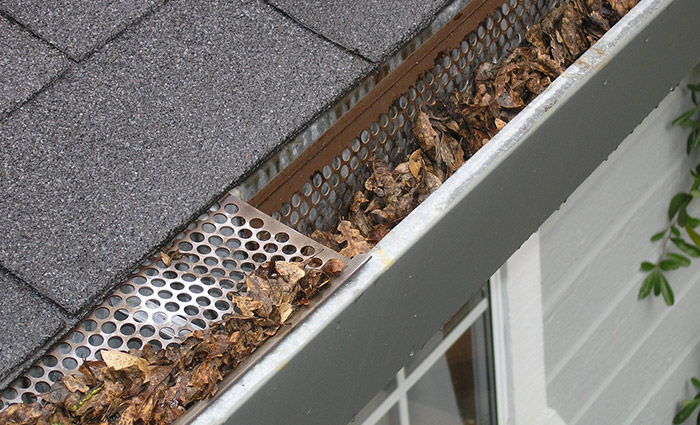
To keep your roof in excellent condition, there are several essential maintenance tasks that you need to perform regularly. These tasks range from cleaning gutters and downspouts to inspecting, flashing, and removing debris or biological growth. These steps safeguard your roof and prevent potential issues that may lead to costly repairs or replacements in the future.
With the right tools, you can tackle gutter and downspout maintenance like a pro. Equip yourself with:
- A sturdy ladder with a stabilizer
- A bucket
- Puncture-resistant gloves
- A gutter scoop
- An extender wand for effective cleaning.
Cleaning Gutters and Downspouts
Regular cleaning of gutters and downspouts diverts water from exterior surfaces, mitigating the risk of rot, mold, and deterioration. This also ensures proper drainage, protecting your roofing, siding, and interior walls from potential damage. Cleaning your gutters and downspouts once or twice a year, ideally in the fall and late spring, is recommended.
Implementing a preventive roof maintenance program can help you stay on top of your roof’s condition and prevent potential issues. Now, with your sturdy ladder, ladder stabilizer, hard-working bucket, puncture-resistant work gloves, gutter scoop, and extender wand, let’s get cleaning!
Inspecting and Repairing Flashing
Inspecting flashing involves carefully checking several areas of the roof surface, while repairing may require using a flashing material patch and securing it with roofing cement to cover any damaged areas. The purpose of roof flashing is to protect areas prone to leaks and direct water away from vulnerable joints and features on the roof. Roofers commonly use galvanized steel, aluminum, and copper for roof flashing. These materials ensure the durability and reliability of your roof.
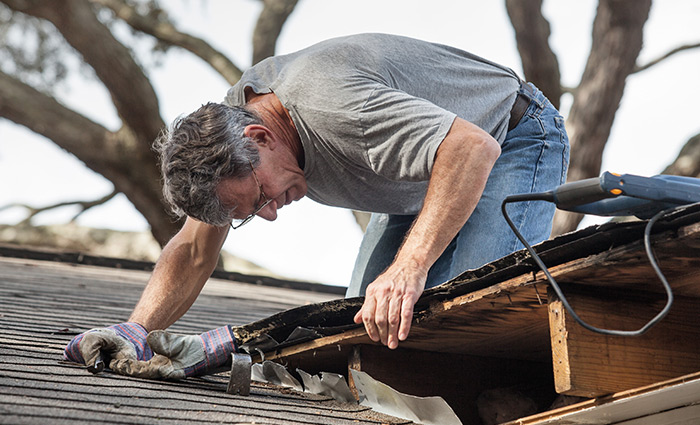
A thorough examination of your roof flashing for cracks, gaps, or deterioration supports proactive maintenance of its integrity. Keep an eye out for loose or missing pieces, water stains, and signs of leaks.
Removing Debris and Addressing Biological Growth
Debris, moss, and algae on your roof can cause significant damage if not addressed promptly. It can trap moisture, causing the roof materials to rot and decay, and the extra weight can also strain the roof and lead to potential damage. To remove this debris, you can use a leaf blower or a broom to sweep it off. It’s a simple and effective way to keep your rooftop clean and well-maintained.
For moss and algae, a powerful method involves mixing one quart of bleach with one gallon of water and 1/4 cup of heavy-duty cleaner, like trisodium phosphate. Another great option is a 50:50 mix of laundry-strength liquid chlorine bleach and water. With these tips, you’ll be on your way to a clean, debris-free roof.
Tip: Trim back trees that are near or overhang your roof. This will eliminate a great portion of leaves and debris, and prevent their branches from falling and puncturing your roof.
Recognizing Signs of Roof Problems
Identifying signs of roof issues is vital for maintaining a healthy roof. While some signs are obvious, like water stains on the ceiling, others may require a more in-depth look. By regularly inspecting the interior and exterior of your roof, you can spot signs of damage early and address them promptly, preventing further deterioration and costly repairs.
Mold on a roof can seriously affect the strength of the roofing materials, leading to the potential breakdown of building materials and causing significant damage to the structure if it’s not taken care of. It’s important to address mold issues promptly to prevent any further damage.
Interior Indicators
Interior indicators of roof problems can be easily overlooked. However, staying vigilant about these signs can save you from expensive and extensive repairs in the future. When you spot common interior signs of roof problems such as:
- Ceiling stains
- Shinners
- Mold where the roof and exterior wall meet
- Increased utility bills
- Structural damage to the roof
It’s important to take proactive steps to address any issues and maintain the integrity of your home.
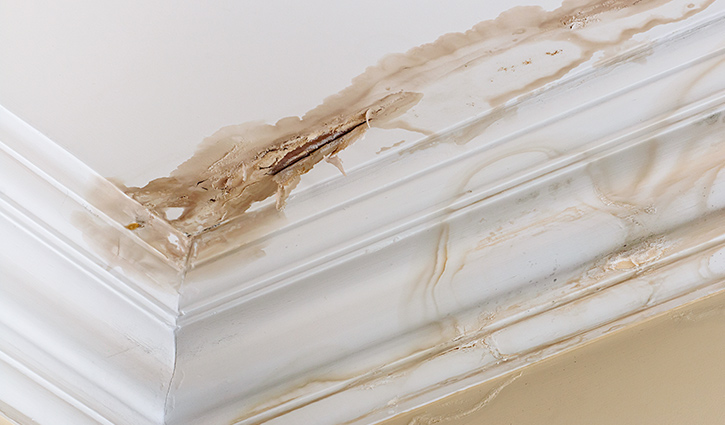
It’s vital to identify signs of mold resulting from roof leaks. Look for water spots on ceilings and notice any musty odor in the affected areas.
Exterior Signals
Exterior signals of roof problems are often more visible and easier to spot. Here are some exterior signs that your roof may need attention:
- Damaged or missing shingles
- Problems with flashing leading to water infiltration
- Rotted wood decking
- Structural issues
Sunlight, precipitation, dirt, temperature changes, improper surface preparation, and ice dams are the factors that can cause paint to peel on roof overhangs.
When to Call a Professional Roofer
While homeowners themselves can tackle some maintenance tasks, it’s always best to call a professional roofer for routine inspections, major repairs, or full roof replacements. Professional roofers not only have the knowledge and experience to handle complex tasks but also have the necessary tools and safety equipment to do the job efficiently and safely.
You should aim to consider a full roof replacement as needed, which is roughly every 15 to 20 years to ensure your home is always protected. This is particularly important if you have an asphalt shingle roof, as this is the typical lifespan for such material.
Routine Inspections
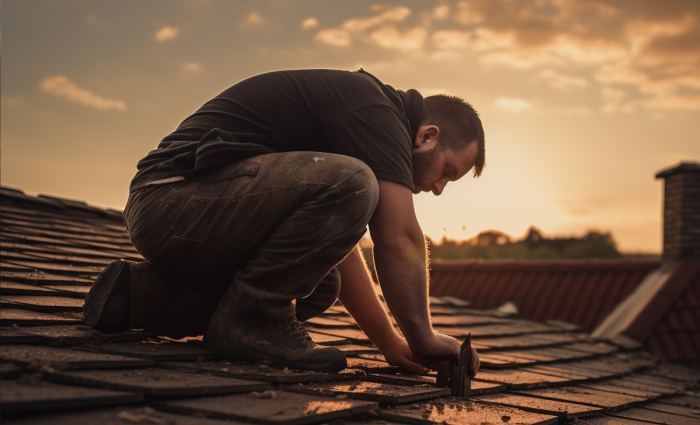
Routine professional roof inspections are vital as they enable early detection of roofing issues, preventing costly repairs by resolving problems before they escalate. Scheduling professional roof inspections at least once a year, or even every two years, will help you avoid potential issues and keep your roof in top condition.
During a professional evaluation of commercial roofs, including tile roofs, the roof’s overall structure is thoroughly inspected for uneven planes, signs of sagging, and the condition of the soffit, fascia, and gutter system.
Major Repairs or Replacements
Complex tasks like major repairs or replacements typically necessitate the expertise of a professional roofer. From damaged fascia to situations demanding a complete roof replacement, professionals best handle these issues. By taking charge of your roof repairs or replacements, you can avoid:
- the potential loss of warranty on shingles
- safety risks
- costly mistakes
- further damage to the roof
- the risk of personal injury due to poor workmanship.
Professional roofers make sure to prioritize safety during major repairs or replacements by diligently following safety measures such as:
- wearing appropriate safety gear
- using safety harnesses and fall protection systems
- practicing proper body placement
- adhering to preventive measures for roof work.
Tips for Choosing the Right Roofing Contractor
Selecting the appropriate roofing contractor is critical to a successful roofing project. You need a contractor that is:
- Experienced
- Reliable
- Licensed
- Insured
- Reputable
Finding a roofing contractor with the proper license and insurance is essential in setting yourself up for success. Ensure they carry General Liability Insurance and Workmen’s Compensation Insurance for comprehensive coverage. Also, don’t forget to ask for proof of insurance to ensure they are adequately insured.
Licensing and Insurance
Hiring a licensed roofing contractor offers you the following:
- Safety
- Warranty
- Reliability
- Expertise
- Time savings
- Cost-effectiveness
- Access to high-quality materials
- Necessary insurance coverage
- Peace of mind
- The expertise to get the job done
A roofing contractor’s insurance, including general liability insurance and worker’s comp insurance, provides essential protection by covering property damage and injuries sustained by homeowners. It’s a crucial safeguard for peace of mind.
Experience and Reputation
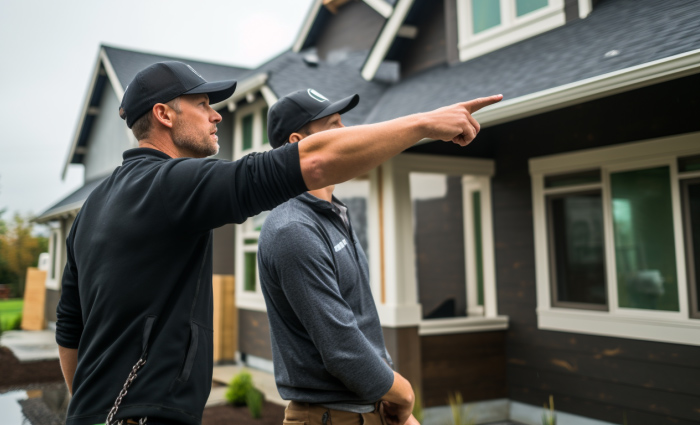
The experience and reputation of a roofing contractor play a significant role in the quality of work you can expect. A reputable roofing contractor:
- Has sufficient experience, typically at least four years of supervisory work experience, to be eligible for a license
- Sets the bar high with quality workmanship, expertise, and a commitment to customer satisfaction
- Offers reasonable pricing
- Maintains integrity
- Provides insurance and warranties
- Consistently meets project deadlines
Look for an established contractor who presents professionally, preferably with an office and online presence.
Written Estimates and Warranties
Securing a written estimate from a roofing contractor is vital as it enables comparisons between various contractors, informed decision-making about materials and project scope, and provides a clear understanding of project costs. It’s crucial to dive into the details and grasp the terms and limitations of a roofing warranty. Look out for proration after 5 or 10 years for material-only warranties, coverage for workmanship, and any limitations and exclusions.
Understanding these aspects will empower you to make informed decisions.
Preventative Maintenance Summary
In conclusion, preventative roof maintenance is an investment that pays off. Not only does it enhance the aesthetics of your home, but it also extends the life of your roof, saves you money, and ensures the safety of your home. By performing regular maintenance tasks, recognizing signs of problems, and knowing when to call a professional, you can keep your roof in top shape for years. Remember, the right roofing contractor can make all the difference. So, take charge of your roof’s health today, and reap the benefits tomorrow!
Frequently Asked Questions
Below are three of the more common preventative roof maintenance questions and answers:
What maintenance should be done on a roof?
To maintain your roof, keep the gutters clean, trim back trees, remove snow, check for damaged shingles, remove moss and mold, look for leaks, ensure strong insulation, and get a roof inspection. These steps will help keep your roof in good condition and prevent potential problems.
How can I recognize signs of roof problems?
Regular inspections of your roof, inside and out, can help you recognize signs of roof problems. Look for interior indicators like ceiling stains and mold and exterior signals such as damaged or missing shingles, problems with flashing, and rotted wood decking.
How do I choose the right roofing contractor?
Choose the right roofing contractor by checking their licensing and insurance, evaluating their experience and reputation, and requesting written estimates and warranties. Look for an established contractor with a strong reputation and professional demeanor. This will ensure quality work and peace of mind.
(404) 220-9288
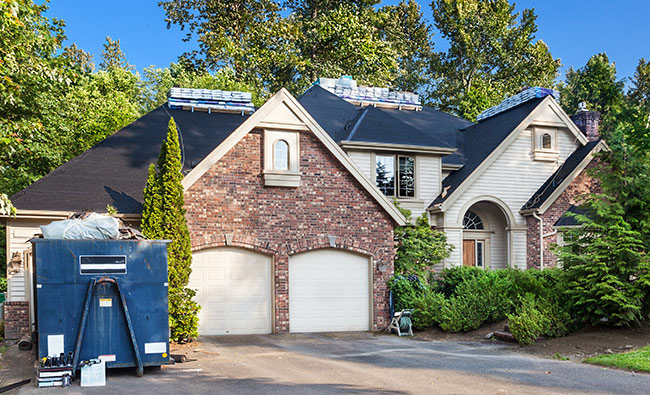
No comments:
Post a Comment
Note: Only a member of this blog may post a comment.